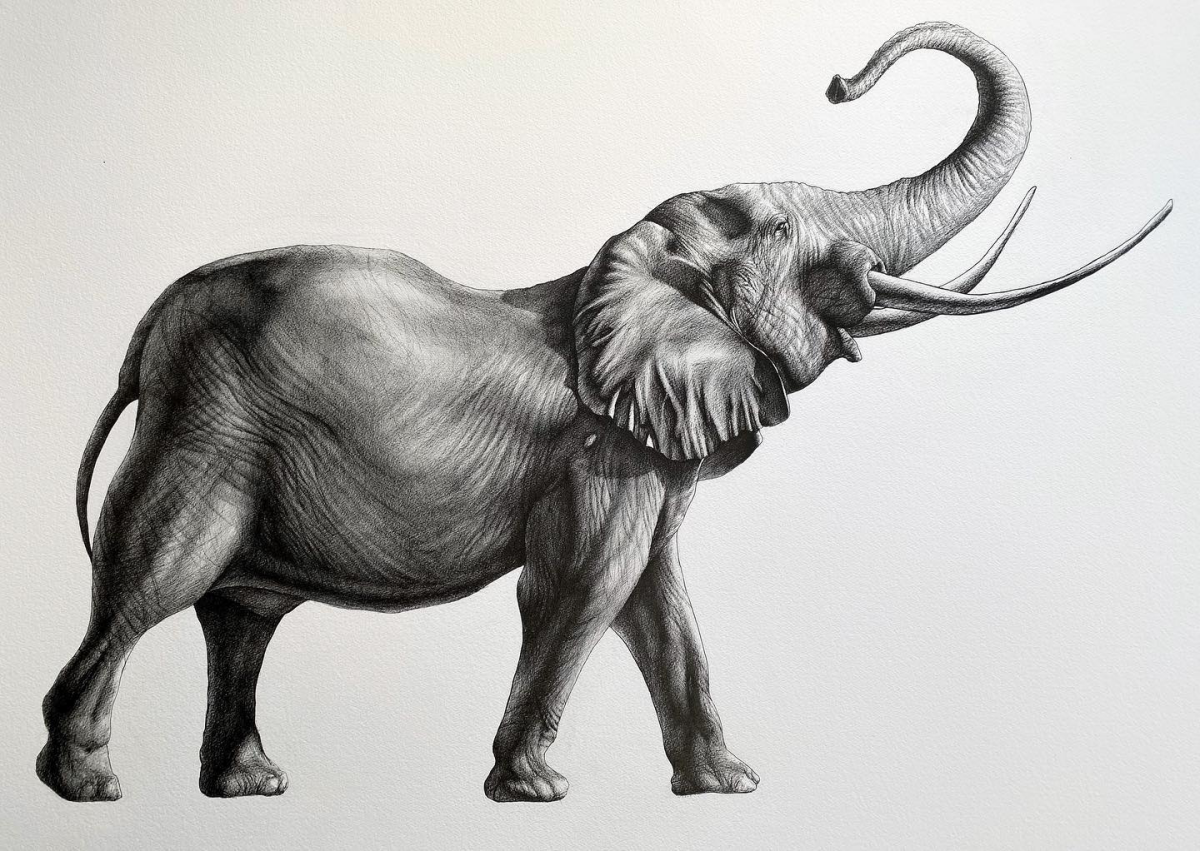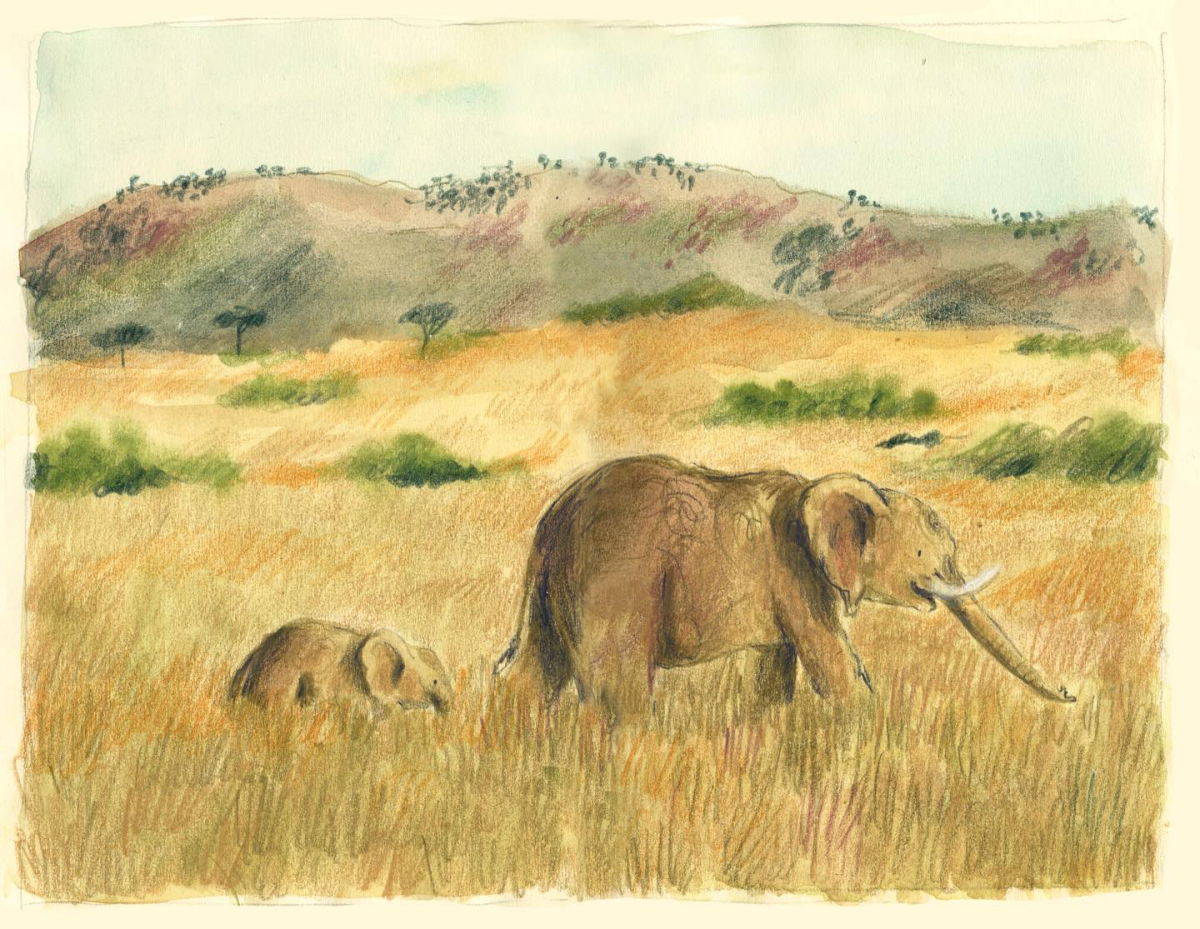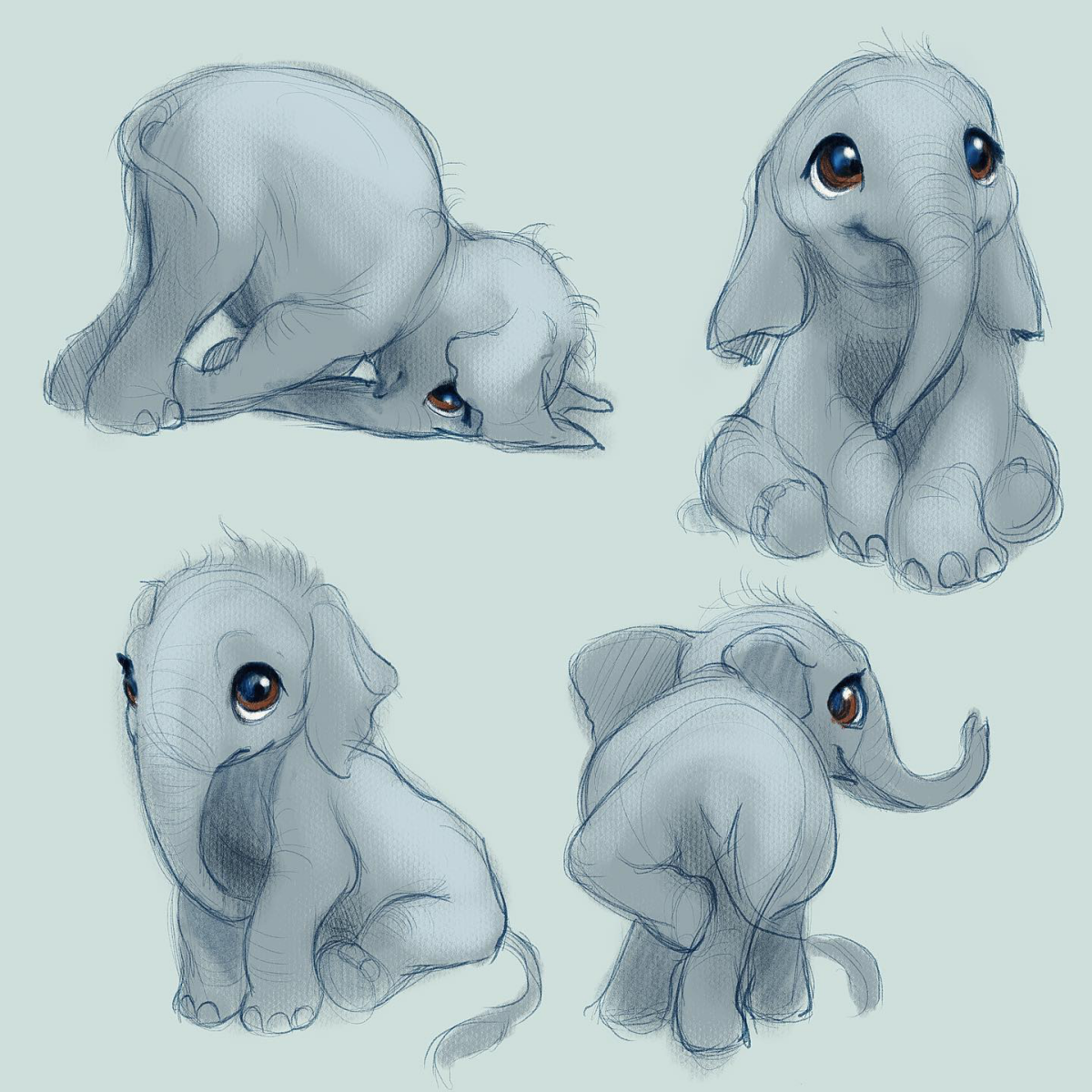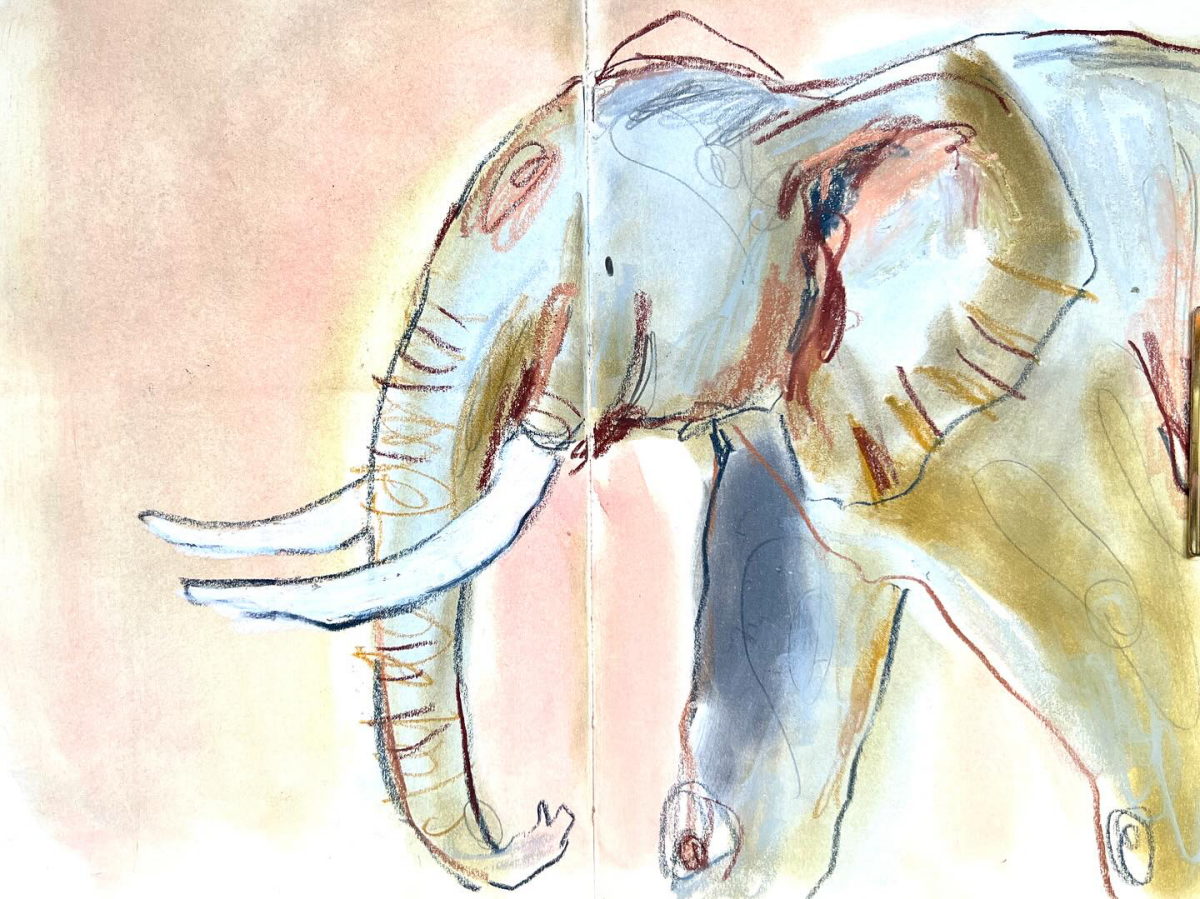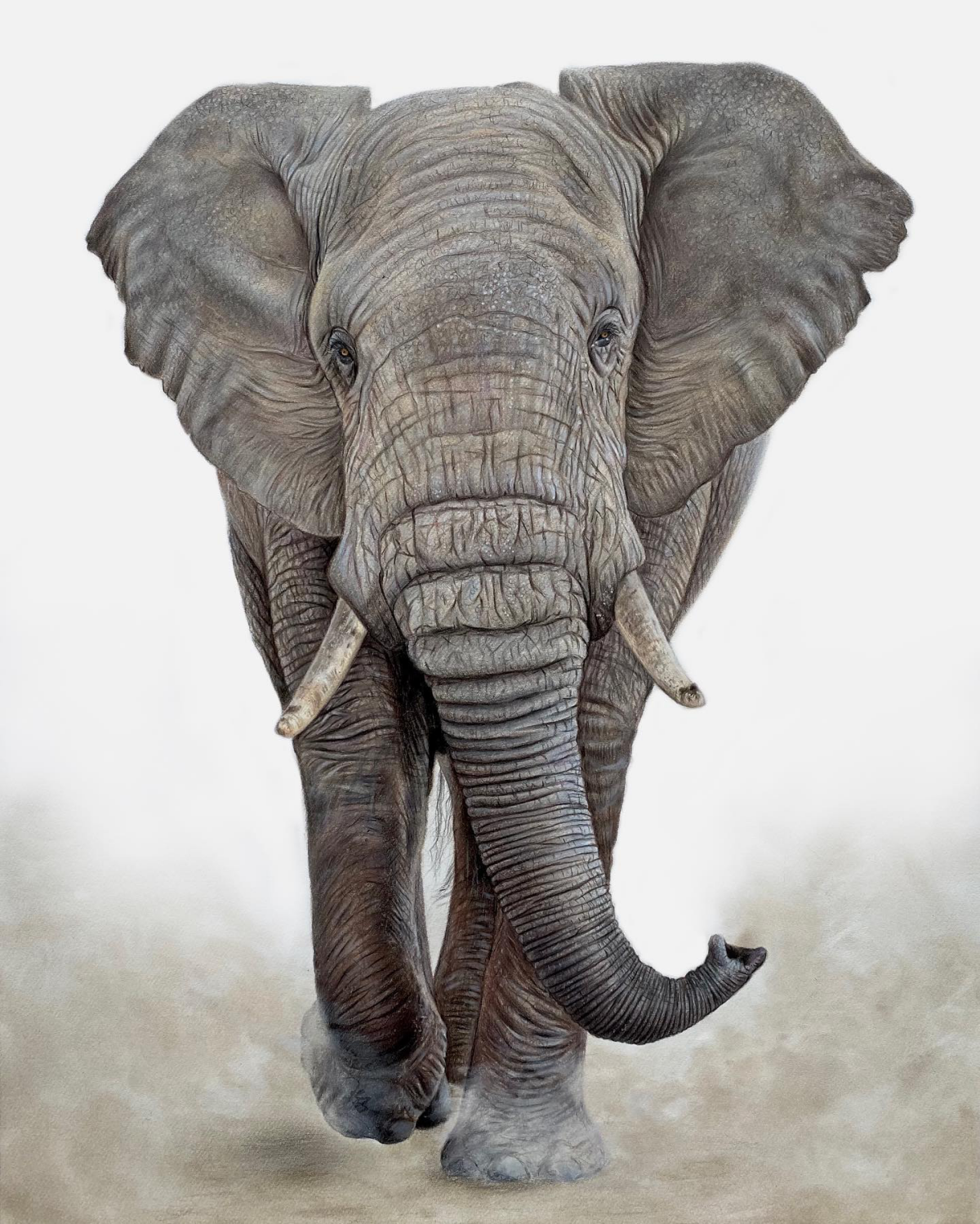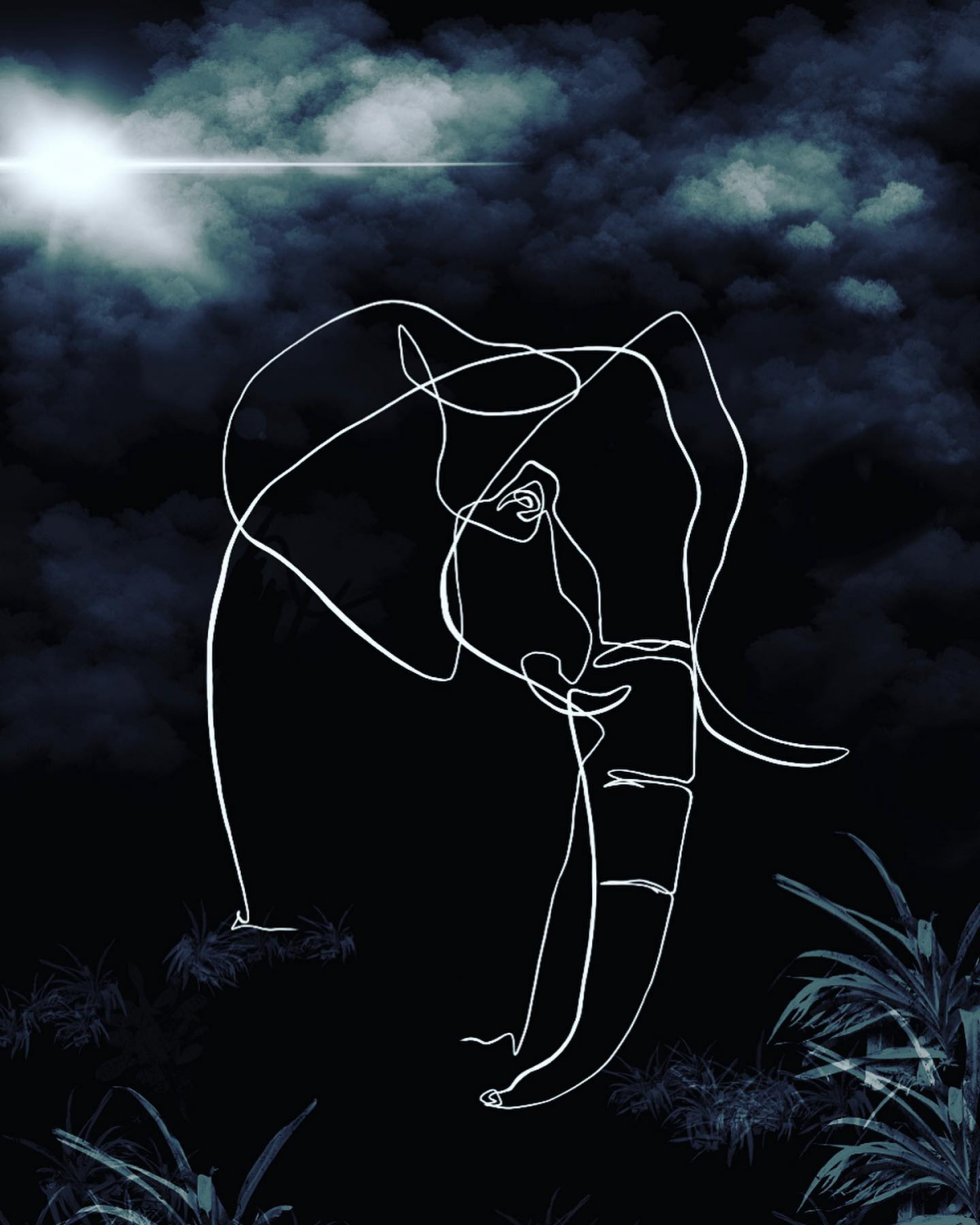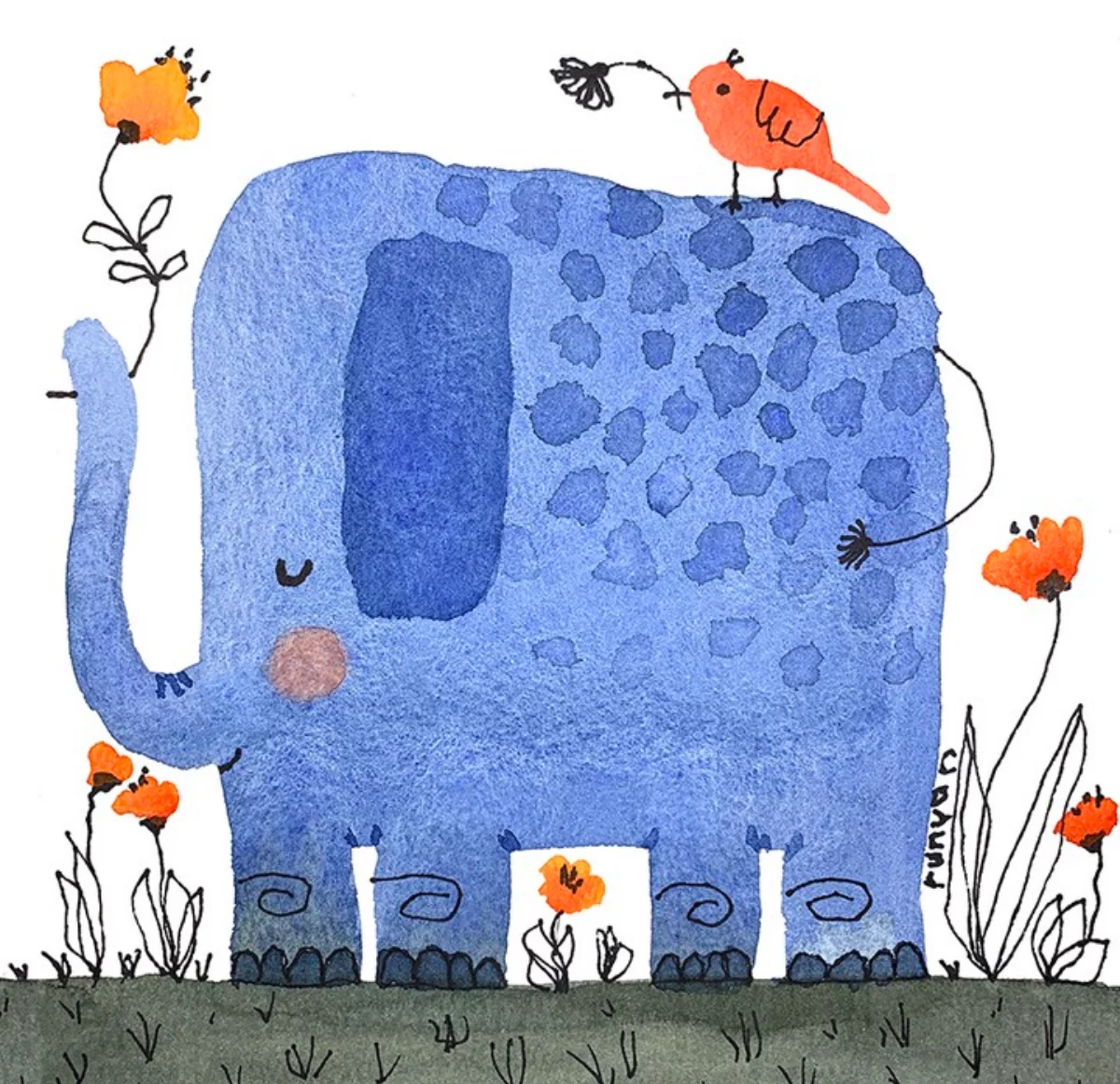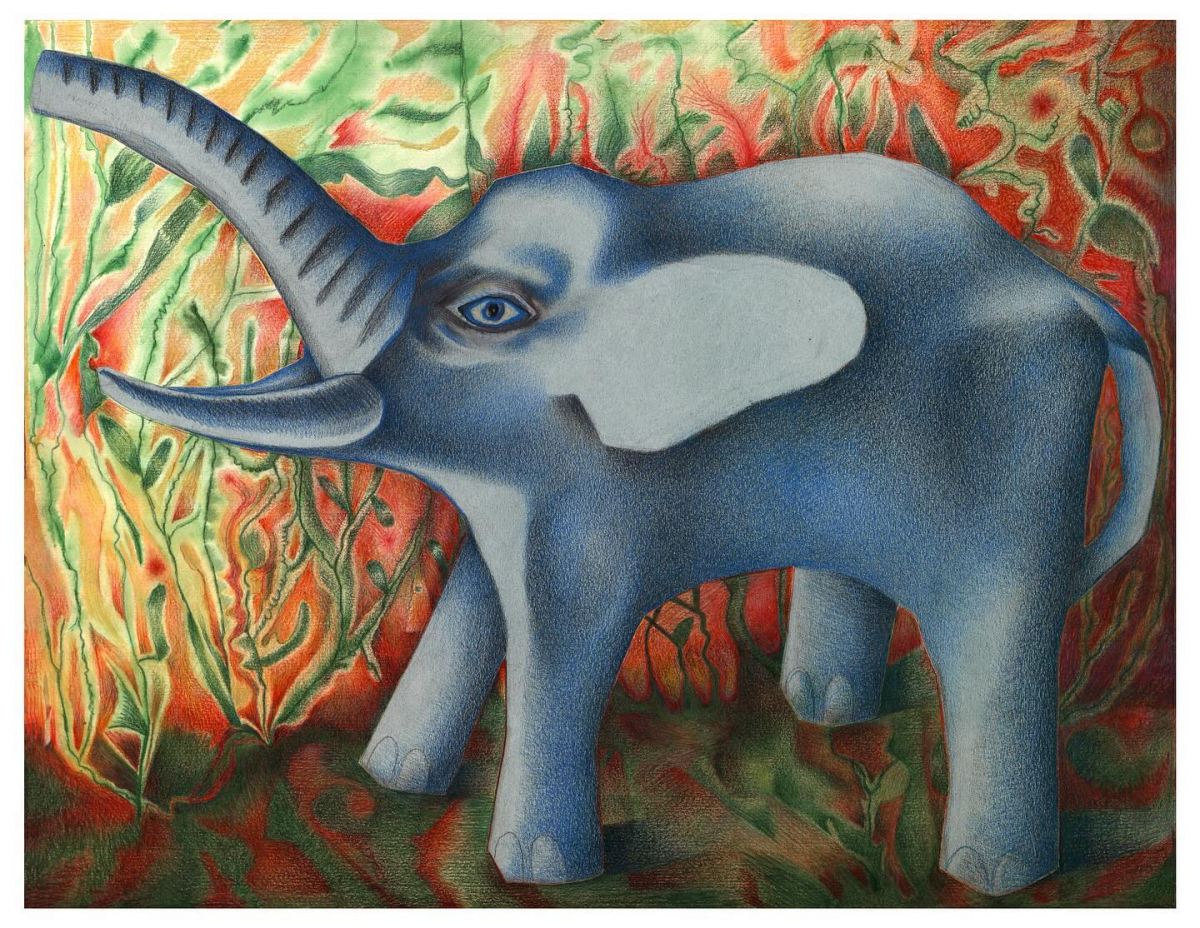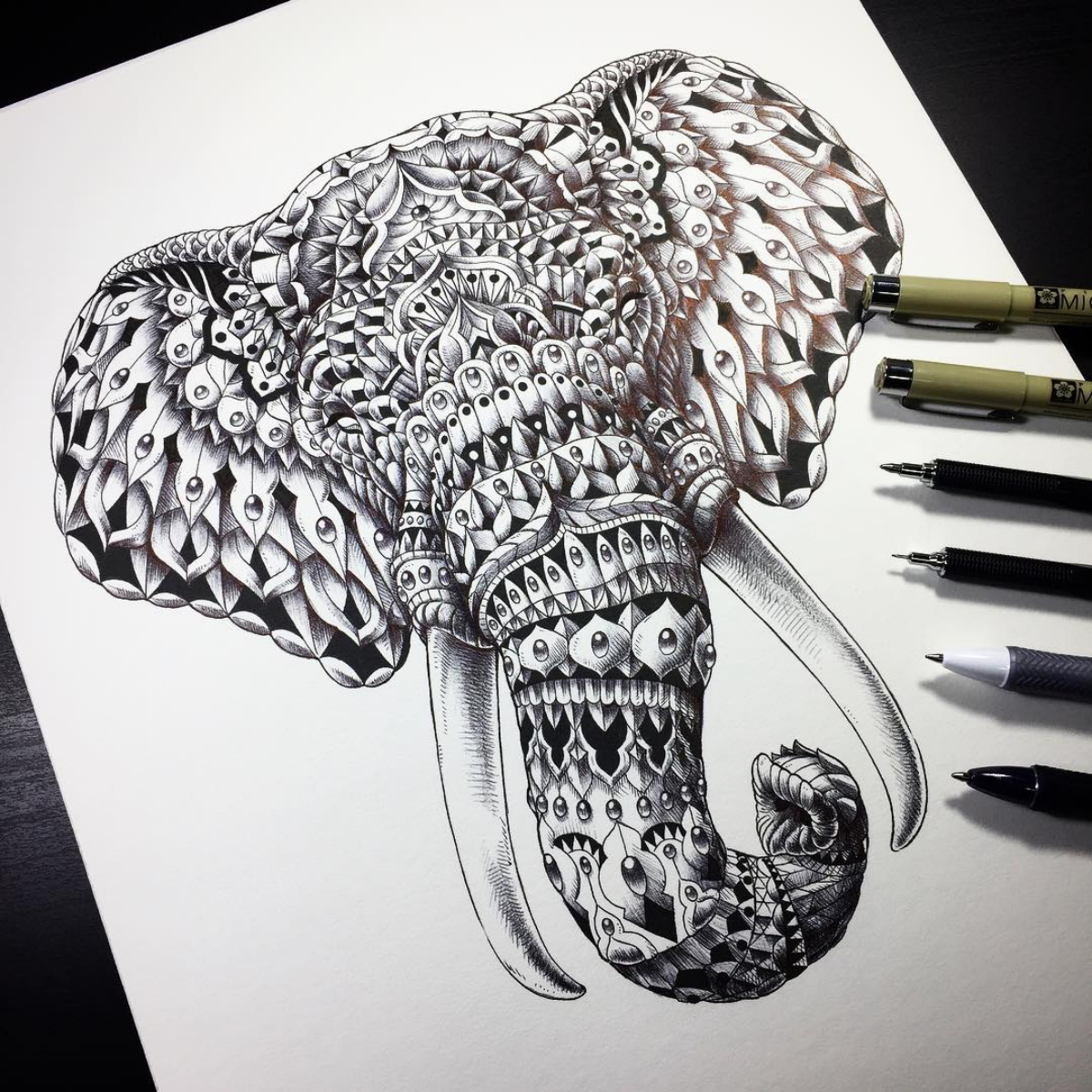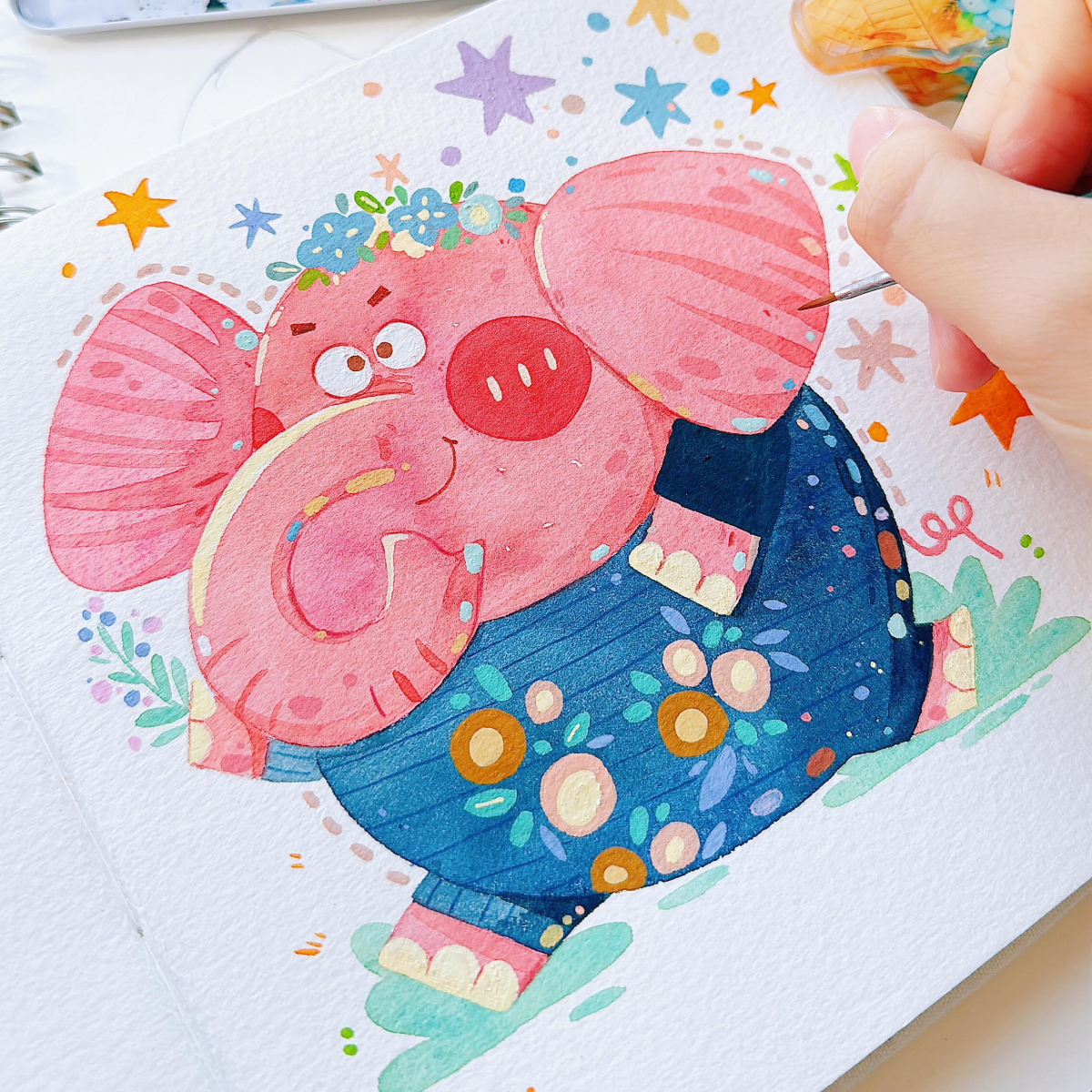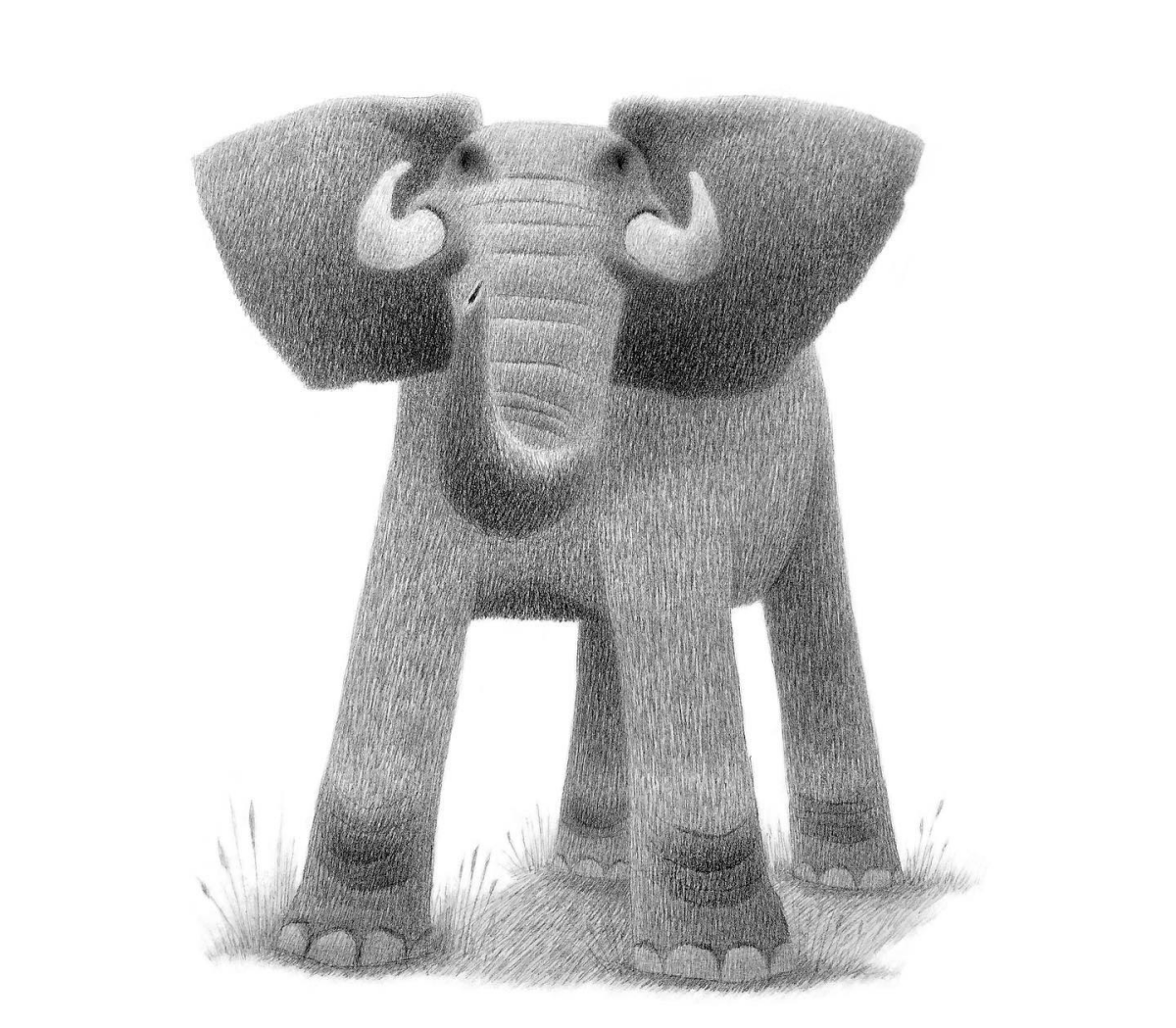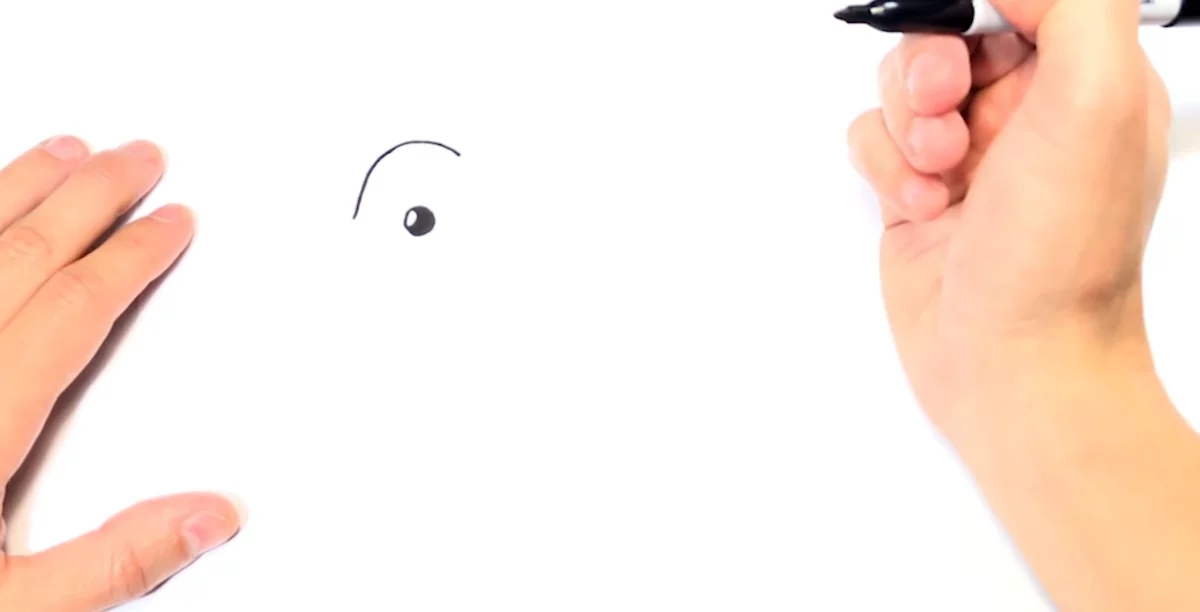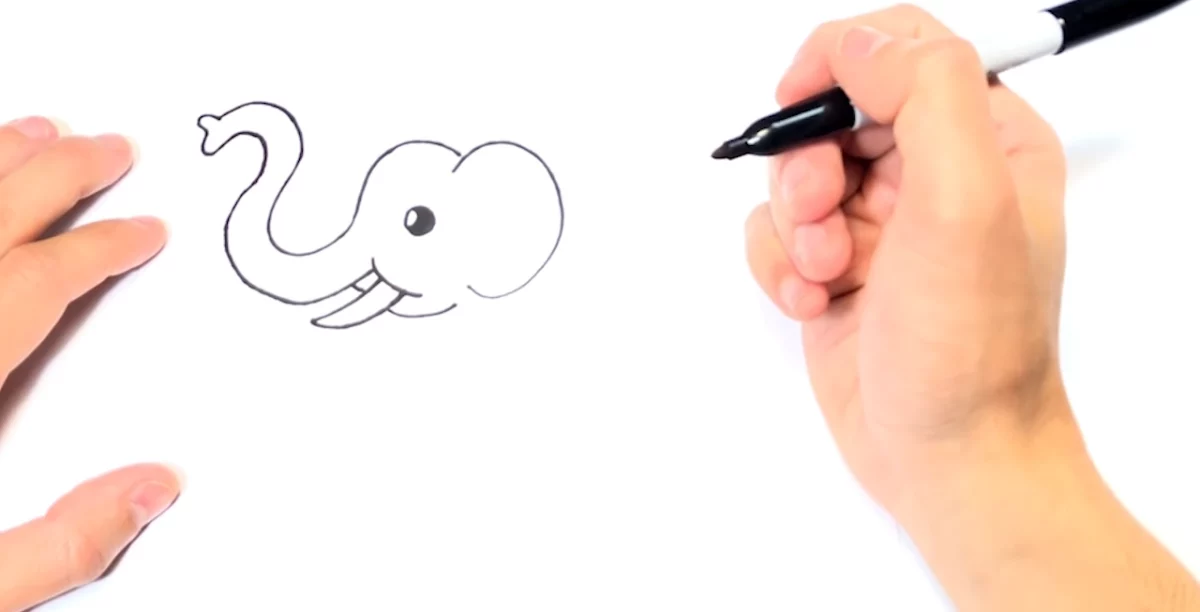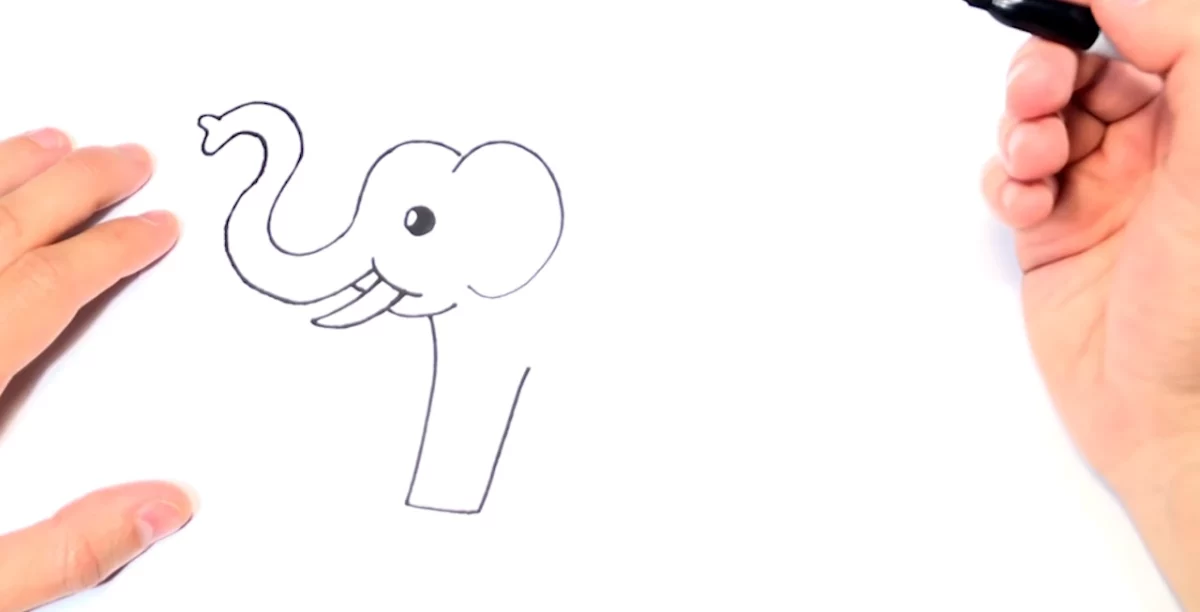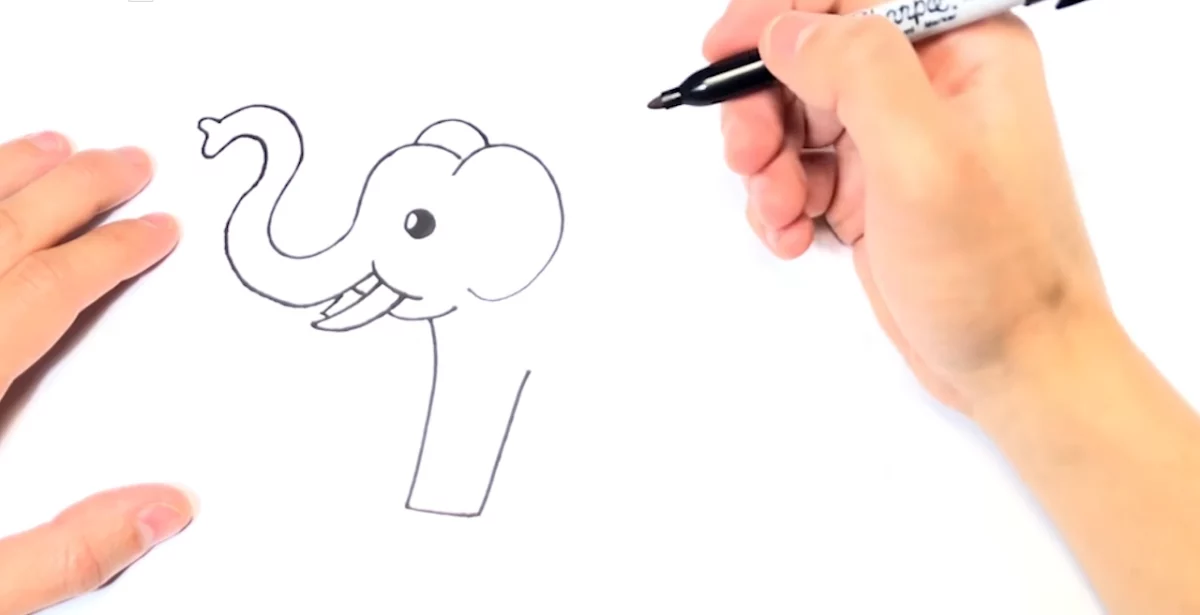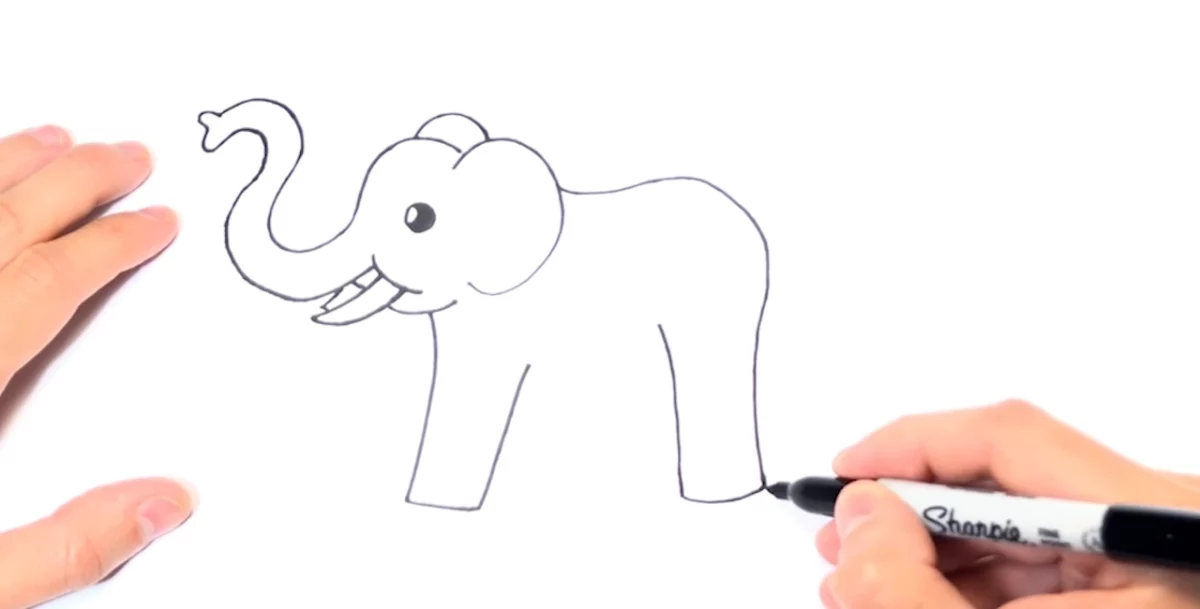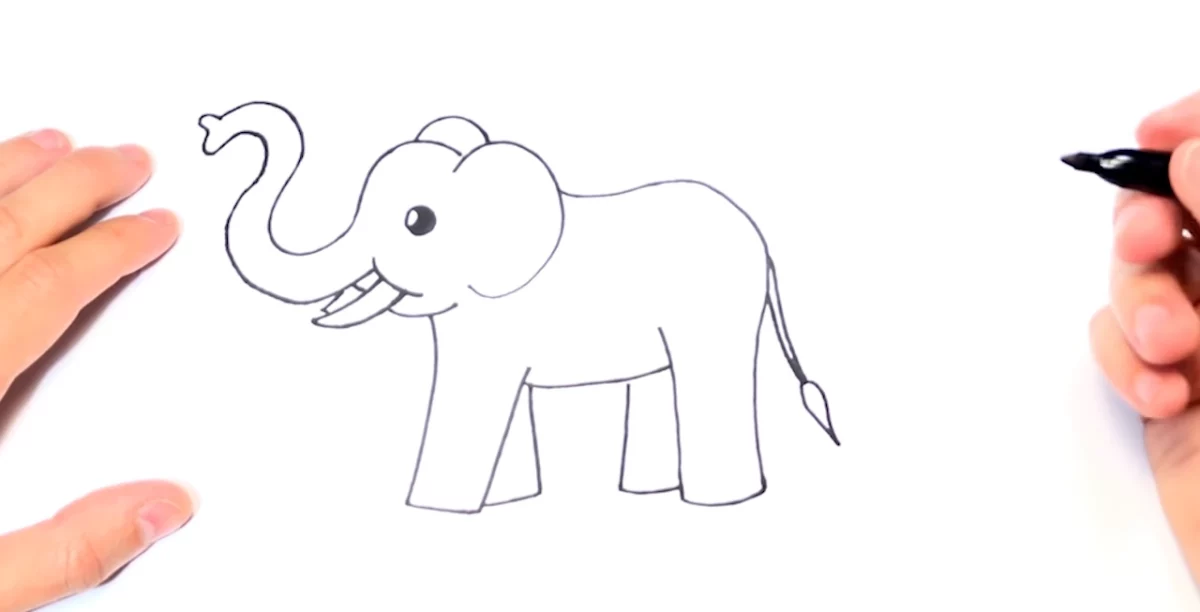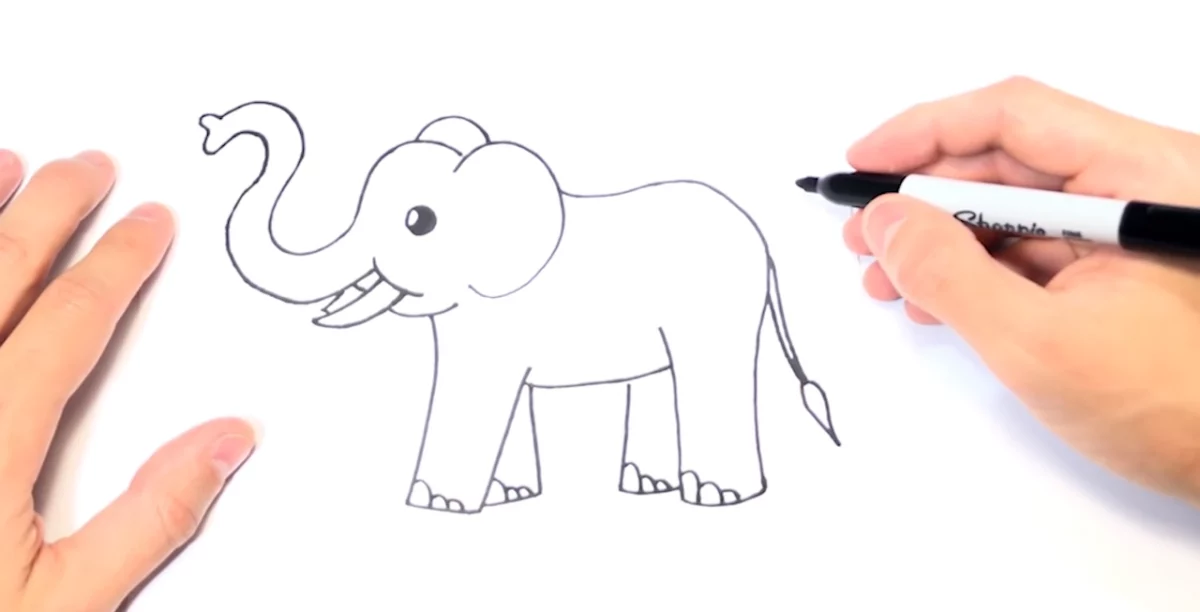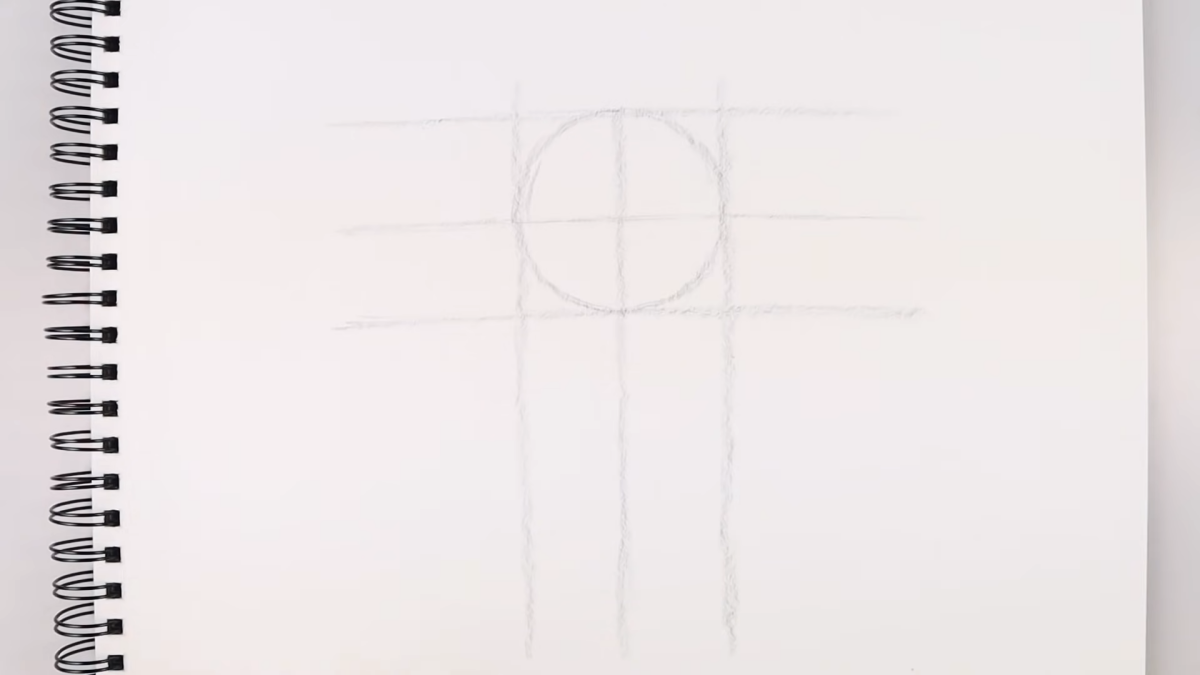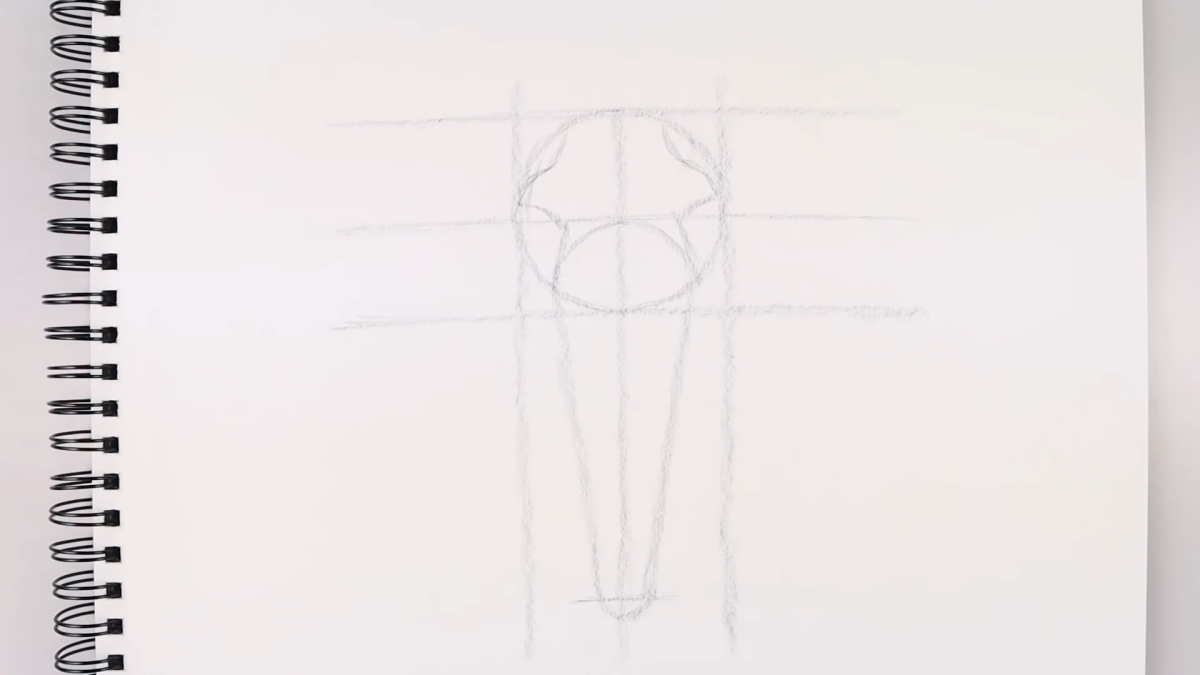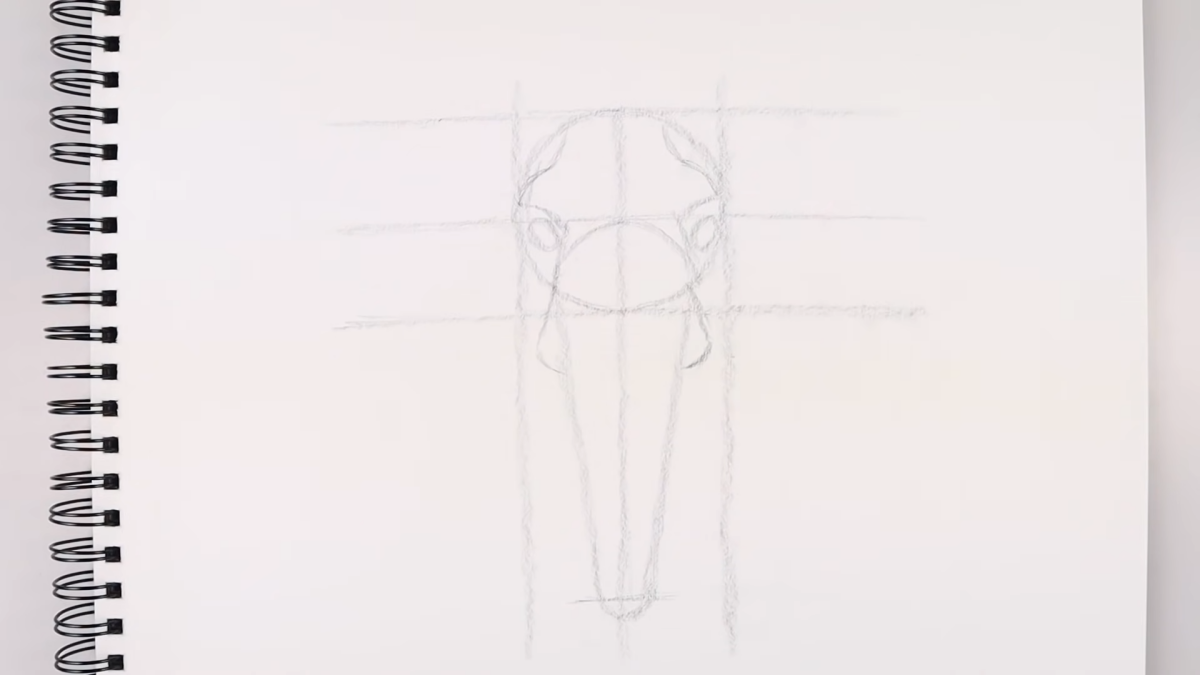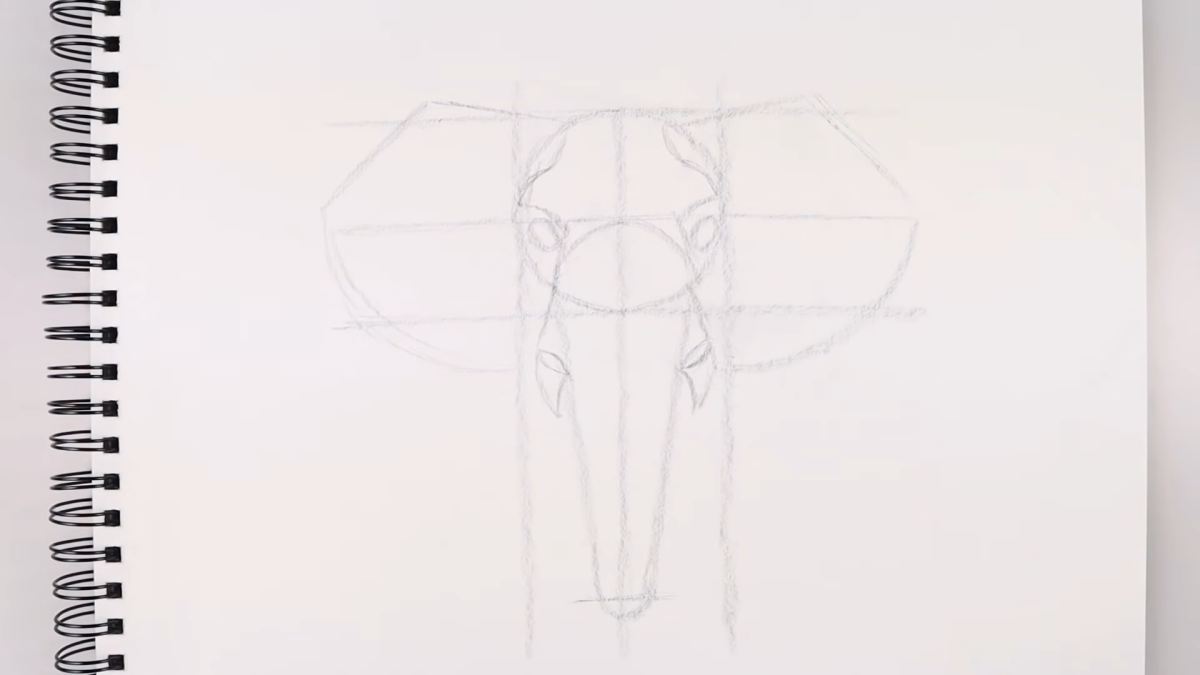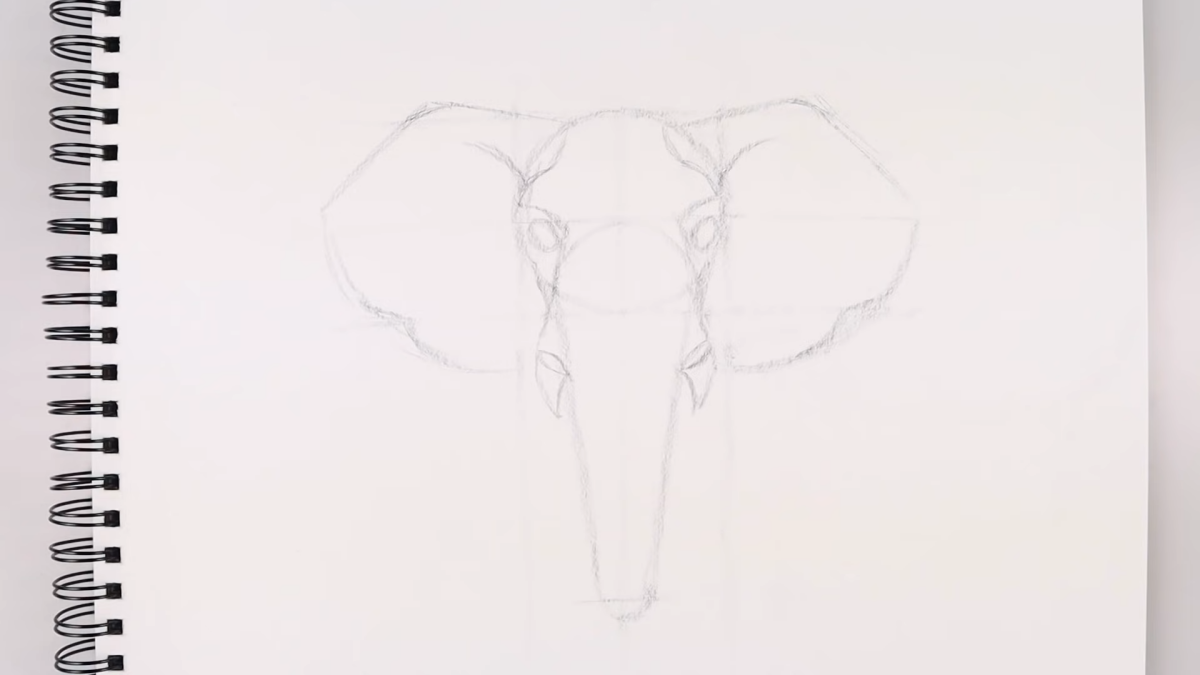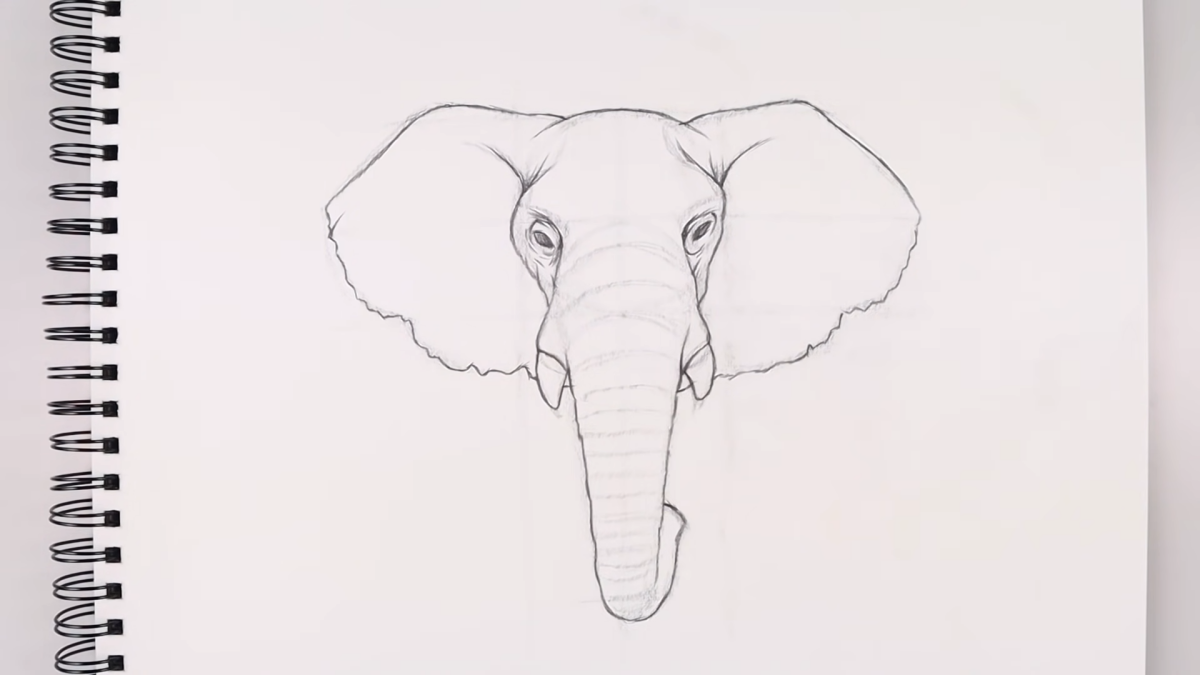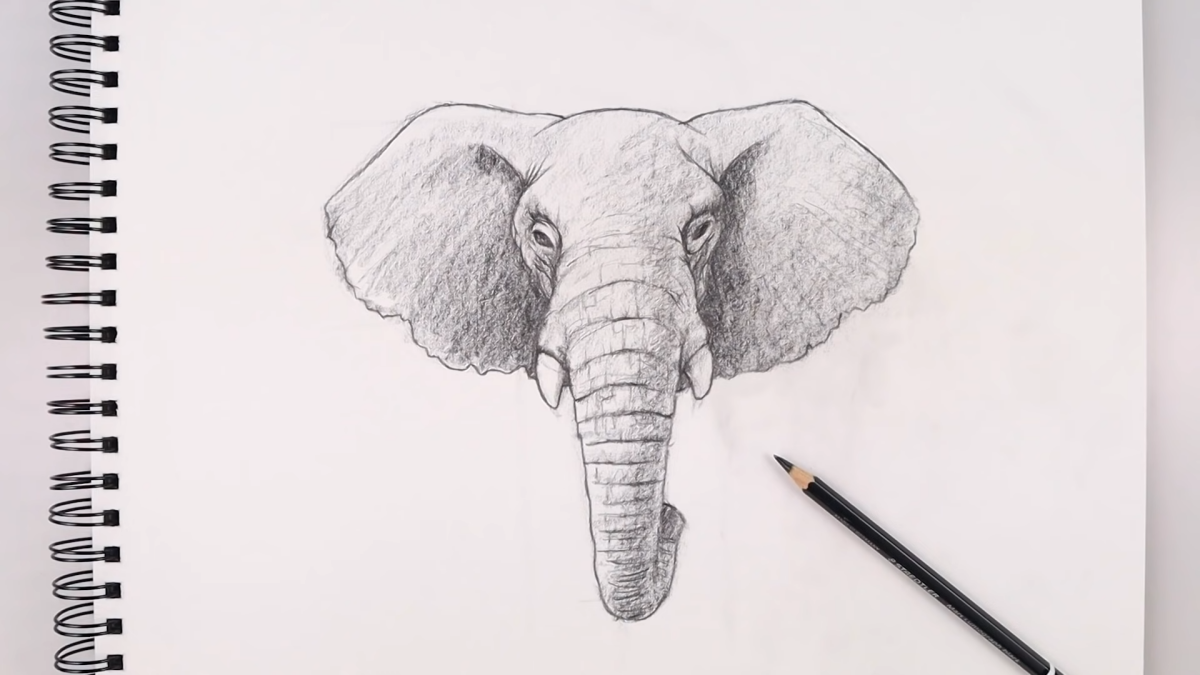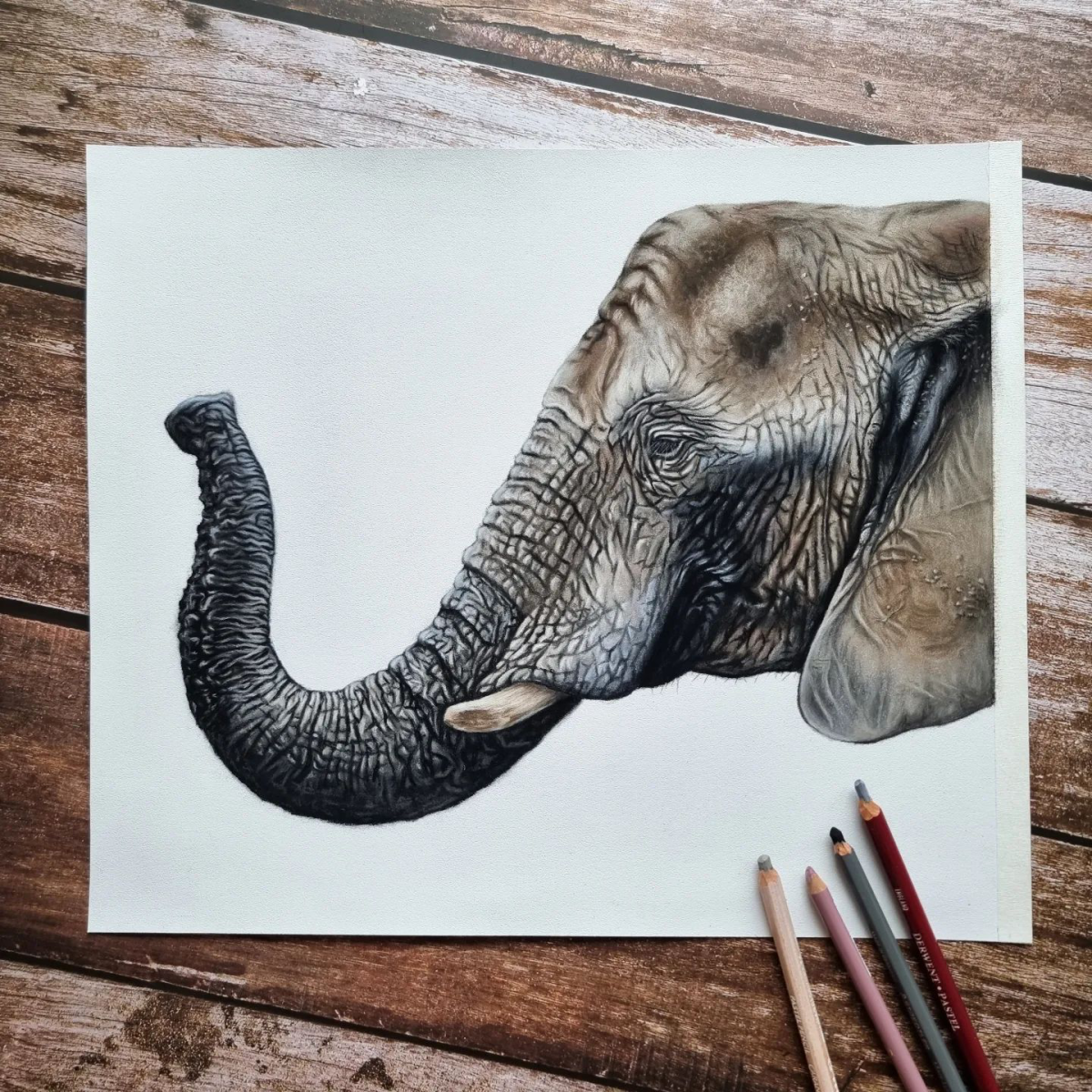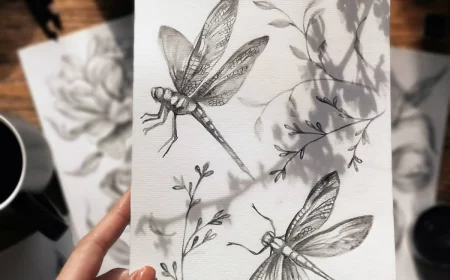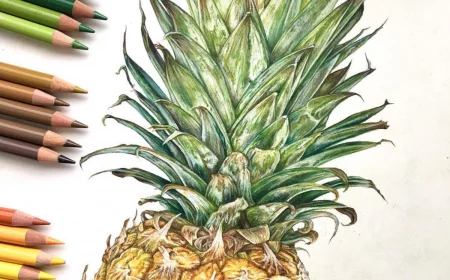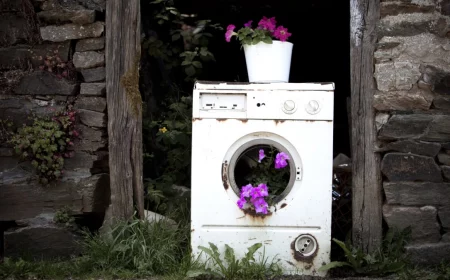15 Creative Elephant Drawing Ideas & Easy Step-by-Step Tutorials
Elephants are some of the most majestic animals that have ever roamed the Earth. Ever since I was a little kid, glued to the TV watching “The Wild Thornberrys,” I’ve dreamt of taking on a safari adventure to witness the beautiful elephants in their natural habitat. Understandably, these creatures are adored in many parts of the world. They truly embody a beauty that’s both serene and powerful. And my fascination with elephants has only grown over the years, alongside my journey as an artist. Drawing an elephant, with its unique form, intricate textures, and expressive demeanor, presents an intriguing challenge that I’m eager to explore. If you like me are itching to grab your art supplies and are in need of inspo, then you are in the right place. Check out these beautiful elephant drawing ideas for inspiration, as well as some easy-to-follow tutorials to test out your skills.
Strap in for a wild artistic safari—elephant style!
In this article
- Understanding Elephants: The Foundation of Your Art
- Beautiful Elephant Drawing Ideas
- How To Draw An Elephant: Easy Step-by-Step Guide
- Step 1: Start with the eyes
- Step 2: Sketching the Beginning of the Head
- Step 3: Adding an Ear and the Trunk
- Step 4: Drawing the Mouth and Tusk
- Step 5: Crafting the First Leg
- Step 6: Adding the Second Tusk and Ear
- Step 7: Sketching the Back and Back Leg
- Step 8: Completing the Body
- Step 9: Add a Tail
- Step 10: Finishing Touches
- How To Draw A Realistic Elephant Head: Simple Guide
Understanding Elephants: The Foundation of Your Art
Before you go and grab your pencils, you first need to learn a bit about your subject. Elephants are the largest land animals on Earth and are easily distinguished by their size, majestic tusks, and unique trunks. Their home can range from the dense forests of Asia to the vast savannas of Africa. These magnificent creatures are not loved by many for their dashing looks, but also for their beautiful character. These gentle giants are revered across cultures for their intelligence, strength, and emotional depth. Renowned wildlife biologist Dr. Jane Goodall notes, “Elephants are not only a symbol of wildlife conservation but also a testament to the complex intelligence and emotional capacity of animals.” The physical attributes of these animals, like their intricate texture of their skin, the expressive nature of their eyes, and their unique shape, provides artists with a rich tapestry of details.
A quick nod to our majestic subjects
Beautiful Elephant Drawing Ideas
If you are in the mood to draw, and you are in need of inspo, then you are in the right place. Today, I have gathered for you treasure trove of beautiful elephant drawing ideas that are sure to spark your creativity. Elephants, with their majestic presence and intricate details, provide a fascinating subject for any artist. From the gentle curves of their massive bodies to the unique texture of their skin, there’s so much to explore and capture in your artwork. Whether you’re a seasoned artist looking for a new challenge or a beginner eager to try your hand at something different, these ideas will guide you through the process of creating your own stunning elephant art. Get ready to unleash your creativity and embark on an artistic safari that promises to be both fun and enlightening!
Unleash your creativity with a trunkful of elephant-inspired art projects
Little baby elephant
Imagine a pint-sized pachyderm with eyes as big as saucers and a heart full of curiosity. Each sketch shows it in a new, playful pose, splashed with colors that seem to dance off the page. This little one could charm its way into any storybook or nursery wall.
A pocket-sized pachyderm bursting with cuteness
Big struts
Picture an elephant with swagger, each stride a splash of color that leaves trails of creativity in its wake. Its majestic form is a canvas, where each stroke tells a story of strength and grace. It’s not just walking. It’s parading through an artist’s dream.
Sketch swagger on a grand scale with an elephant that knows its worth
Realistic elephant
This isn’t just an elephant. It’s a masterpiece of detail, where every wrinkle tells a story and every shadow holds a secret. So lifelike, you’d swear you could reach out and feel the warmth of its skin. It is a testament to the power of art to breathe life into the canvas.
Dive deep into the details for a creation that almost breathes
Together forever
Two elephants, trunks entwined in a tender embrace that speaks volumes of love without a single word. This drawing is a gentle reminder of the strength found in connection and the beauty of enduring friendships.
Illustrate an unspoken bond with intertwined trunks
Reach for the stars
A whimsical scene where an elephant becomes the unlikely steed for a hedgehog with cosmic aspirations. Together, they stretch towards the stars, a charming duo on a quest to touch the sky. It’s a tale of ambition, friendship, and the magic of believing in the impossible.
Aim high with an elephant-hedgehog duo on a stellar quest
Line drawing
With one continuous line, an elephant emerges, a testament to the elegance of simplicity. This minimalist marvel proves that sometimes, a single line with a beginning and no end can capture the essence of its subject in ways a thousand details never could.
Simplify with elegance in a single, flowing line
Strutting
Here’s an elephant that walks with a tune in its step, surrounded by a world painted with the vibrant strokes of markers. It’s a scene bursting with life, a reminder to stride through life with joy and color.
Color boldly as this elephant struts through a vibrant life
Blue friend
An elephant as if dreamed up by a child, painted in shades of serene blue, with a whimsical bird companion perched atop. This duo adventures through a landscape dotted with flowers, a watercolor wonderland that beckons readers to leap into the pages of a fairy tale.
Paint a whimsical buddy tale in serene blues and playful scenes
Surrealistic elephant
Step into a dreamscape where elephants float among the clouds, their forms swirling with kaleidoscopic colors. It’s a place where reality bends and imagination reigns, inviting the viewer to question what they see and to see beyond what they know.
Blend reality and fantasy in a kaleidoscopic dreamscape
Elephant head
Dive into the psyche of an elephant adorned with psychedelic patterns, each swirl a portal to another dimension. This head doesn’t just belong to an elephant. It’s a gateway to an odyssey, a blend of realism and fantasy that captivates and intrigues.
Zoom in for a psychedelic swirl of detail and color
Tropical paradise
A digital creation that transforms an elephant into a burst of tropical hues, with flowers blooming from its very being. It’s an explosion of color that celebrates the vibrancy of life, an invitation to find paradise wherever you may roam.
Splash into a digital world where elephants roam in technicolor
Spring elephant
Cloaked in the soft hues of spring, this elephant dons a flower crown and beams with joy. It’s a frolic through the blooms, a cuddly ambassador of the season’s renewal and cheer, ready to brighten any space with its playful presence.
Embrace the season with a floral-crowned, joyous giant
Charcoal art
Shadows and light dance across the form of an elephant rendered in charcoal, its edges blurred into the mystique of the medium. This piece merges the abstract with the tangible, a stylish nod to the majestic creature, reimagined through the smoky whispers of charcoal.
Here light meets dark in elegant harmony
How To Draw An Elephant: Easy Step-by-Step Guide
Creating a delightful elephant drawing can be a fun and easy project! Here’s a simple step-by-step guide from artist @CutestDrawings to help you bring your own elephant to life on paper:
Step 1: Start with the eyes
Start your elephant masterpiece by drawing a simple circle that will form the eye. Within this circle, sketch a small half-circle at the top and fill it in black to create the pupil. This small detail is crucial as it brings a spark of life to your drawing, making the elephant’s eye appear lively and expressive.
Step 2: Sketching the Beginning of the Head
Once the eye is in place, draw a curved line slightly above it. This isn’t just any line. It’s the beginning of your elephant’s head. It sets the stage for the rest of the facial features and gives you a reference point for where the ear and the trunk will eventually go. Think of it as the foundation upon which you’ll build the character of your elephant’s face.
Step 3: Adding an Ear and the Trunk
On one side of the curved line you’ve drawn for the head, add a large, floppy ear. Elephants are renowned for their big ears, so don’t hold back—make it prominent. On the opposite side of the head line, create a swirly line upward. This will be the elephant’s trunk. Give it a playful curve to add a sense of movement and whimsy to your drawing.
Step 4: Drawing the Mouth and Tusk
Below the trunk, add a simple line to represent the mouth. Then, draw a tusk starting from under the trunk, tapering it to a point. This tusk is a signature feature of elephants and adds a noble flair to your drawing. On this tusk, include a small marking resembling a flipped number three for the nostril, adding a bit of detail to bring realism to your elephant’s face.
Step 5: Crafting the First Leg
From the bottom edge of the head, draw a line downward to create the first leg. Remember, elephant legs are thick and powerful, so make sure the width reflects the sturdy support they provide. This leg is the first step in bringing your elephant off the page and giving it a sense of grounding.
Step 6: Adding the Second Tusk and Ear
Behind the first tusk, sketch a second, slightly smaller tusk. This addition creates a sense of depth, making it appear as if the elephant’s face is turned slightly. Then, draw a smaller ear on the other side of the head. This ear, being further away, should be smaller to maintain the perspective in your drawing.
Step 7: Sketching the Back and Back Leg
To define the elephant’s back, draw a curved line extending from the top of the head down to where the back leg begins. This line shapes the body’s contour. Add the back leg, mirroring the form of the front leg but with a bend to indicate the joint, enhancing the realism of your elephant’s posture.
Step 8: Completing the Body
Now, draw the remaining legs, positioning them slightly behind the front legs to show depth. These legs should be a bit smaller to emphasize the perspective. Connect these legs with a curved line for the stomach, rounding out the elephant’s form and giving it a solid, believable body structure.
Step 9: Add a Tail
No elephant is complete without its tail. At the end of the back, sketch a small tail with a tuft at the end. This detail, though small, is significant, adding to the completeness of your elephant and giving it a more finished look.
Step 10: Finishing Touches
Finally, add small lines at the bottom of each leg to indicate toes. Elephants have noticeable toenails, and these lines help ground your drawing in reality, adding one last touch of detail that transforms your series of shapes and lines into a recognizable, charming elephant ready for adventure.
How To Draw A Realistic Elephant Head: Simple Guide
Drawing a realistic elephant head can be a fulfilling challenge for any artist. Here’s a simplified guide from artist MRTY, a former professional artist in the film and video game industry, for The Cartooning Club to help you achieve this with precision and beauty.
Step 1: Creating the Grid
Begin by drawing a grid on your paper. This grid, often comprised of a central line intersecting with a circle, serves as a foundational guide, ensuring symmetry and proportion in your drawing. This basic structure helps anchor the placement of the elephant’s features, allowing for a more accurate depiction.
Step 2: Sketching the Trunk and Eyes
Using the circle at the center of your grid as a reference point, start sketching the elephant’s trunk extending downward. The grid lines assist in maintaining symmetry, making sure that the trunk aligns correctly with the rest of the head. Within this framework, also begin to outline the shape of the eyes, using the grid to position them evenly on either side of the trunk.
Step 3: Forming the Tusks and Eyes
From the base of the trunk, where it meets the head, start forming the tusks. Initially, draw circles where the eyes will be, ensuring they are symmetrical and correctly proportioned relative to the trunk and tusks. This step begins to bring character and depth to your elephant’s face.
Step 4: Adding the Tusks
Now refine the tusks, giving them their characteristic pointy shape. Tusks should curve slightly, emerging from beneath the trunk and framing the elephant’s face. This addition significantly contributes to the realism of your drawing, emphasizing the majestic nature of the elephant.
Step 5: Sketching Some Big Ears
Elephants are renowned for their large ears. Sketch big ears on both sides of the head, using the grid as a guide for size and symmetry. At this stage, the ears may appear round or basic in shape, but they will be refined later on.
Step 6: Refining The Ears
With the basic shapes in place, carefully erase the grid lines, cleaning up your drawing. Then, refine the ears, adding curves and folds to transition from basic round shapes to more realistic, textured ears. This detail adds life and movement to your drawing.
Step 7: Adding Details
Begin to add intricate details. Extend the trunk slightly behind and add texture to it, such as wrinkles and lines, to convey its thickness and flexibility. This step brings a sense of realism to the elephant’s trunk, making it appear lifelike.
Step 8: Outlining and Adding Final Details
With the basic shapes and textures in place, outline the entire elephant head, refining the details along the way. This includes enhancing the eyes, tusks, and ears, and adding any final touches to the trunk. Your drawing should now start to look detailed and realistic.
Step 9: Shading and Contouring
The final step involves shading and contouring. Use shading to create depth and dimension, highlighting areas where light naturally hits and adding shadows where they would naturally fall. This step brings your elephant head to life, adding a three-dimensional quality to your drawing.
I absolutely love elephants. These majestic animals are a pleasure to look at and an even bigger pleasure to draw. I hope you found this article useful. Now you have plenty of drawing inspo for your next art session and some simple tutorials to try out. Just remember the value of patience and persistence in mastering the art of drawing. We hope these tutorials inspire you to explore your art skills further, experiment boldly, and share your creations with the world. Keep drawing, keep dreaming, and let the essence of the elephant guide your artistic journey onward.
Your canvas now roars with the majesty of elephants!

